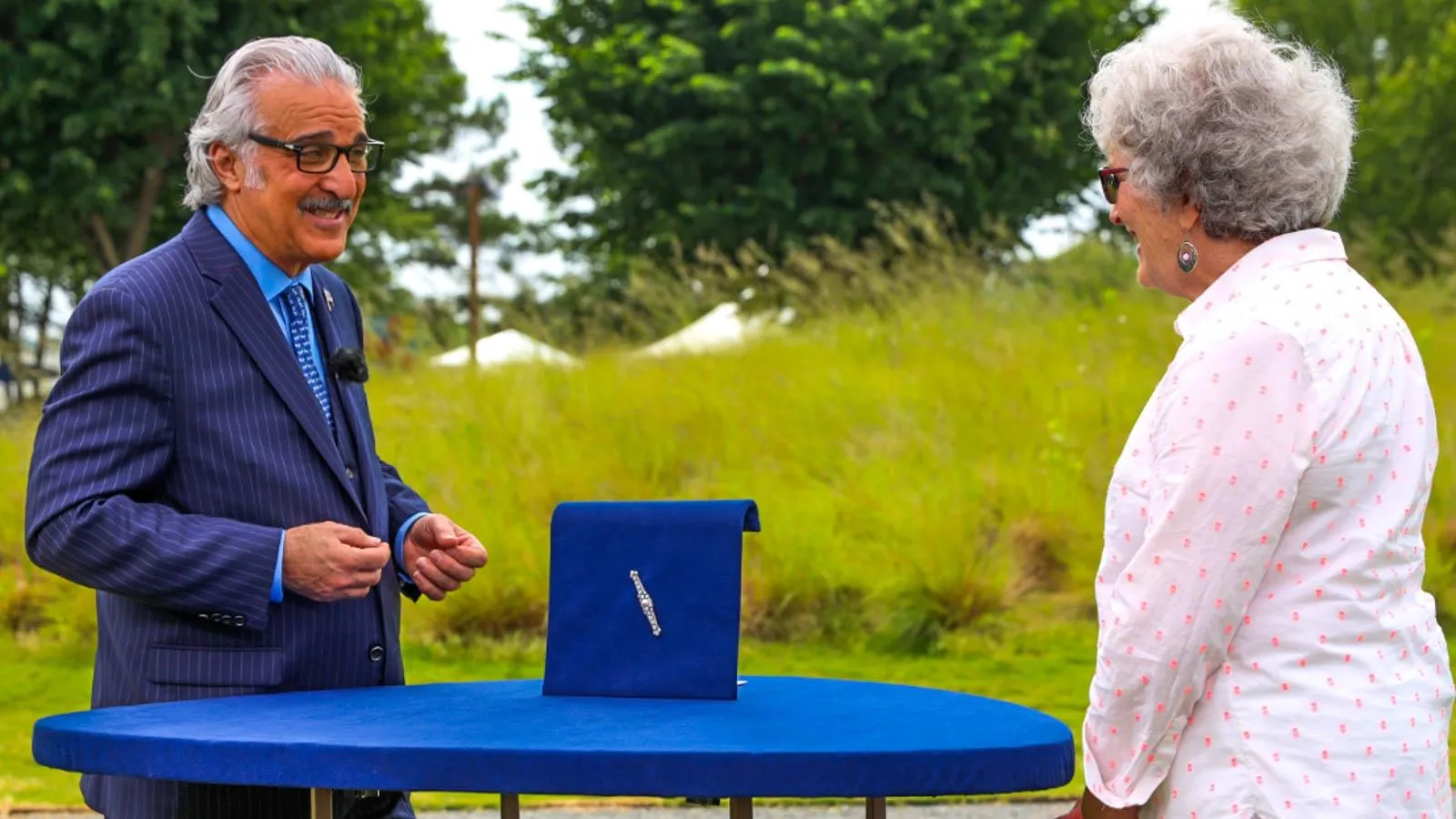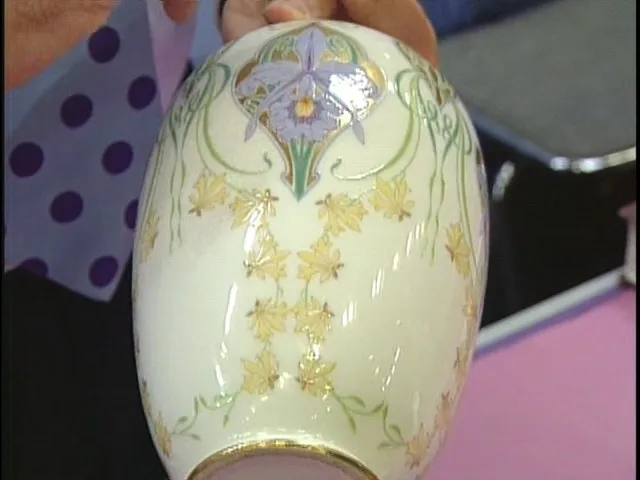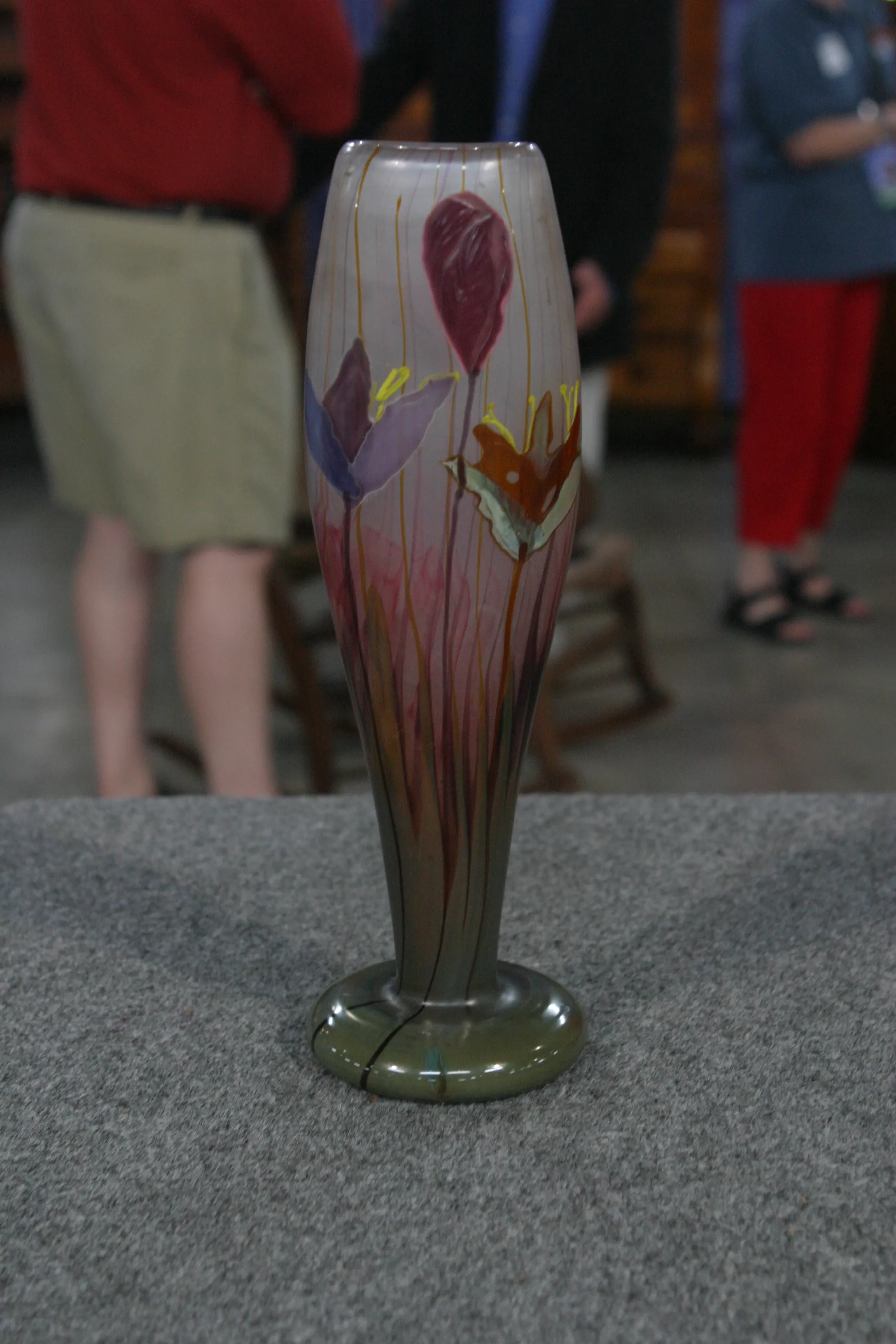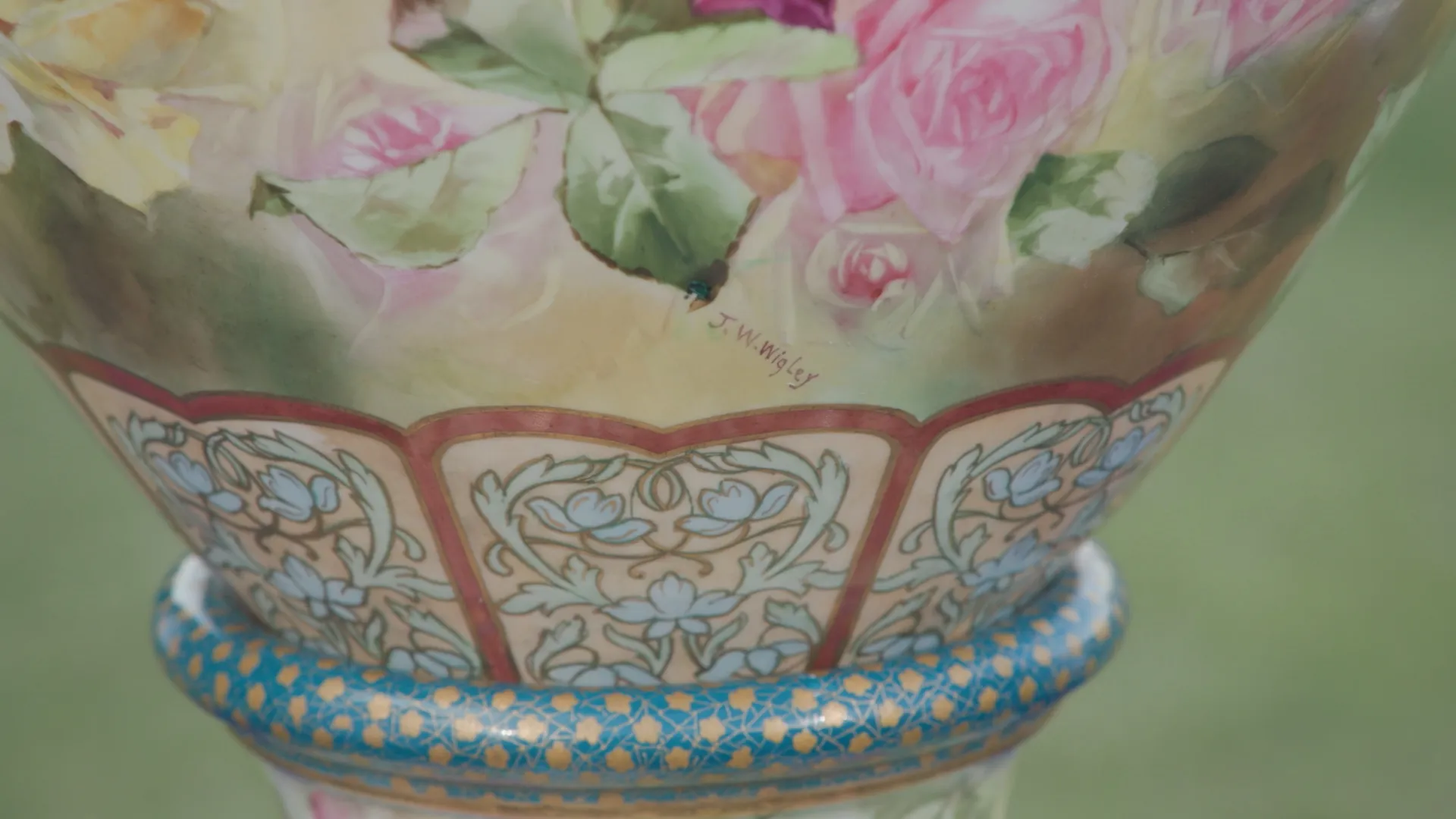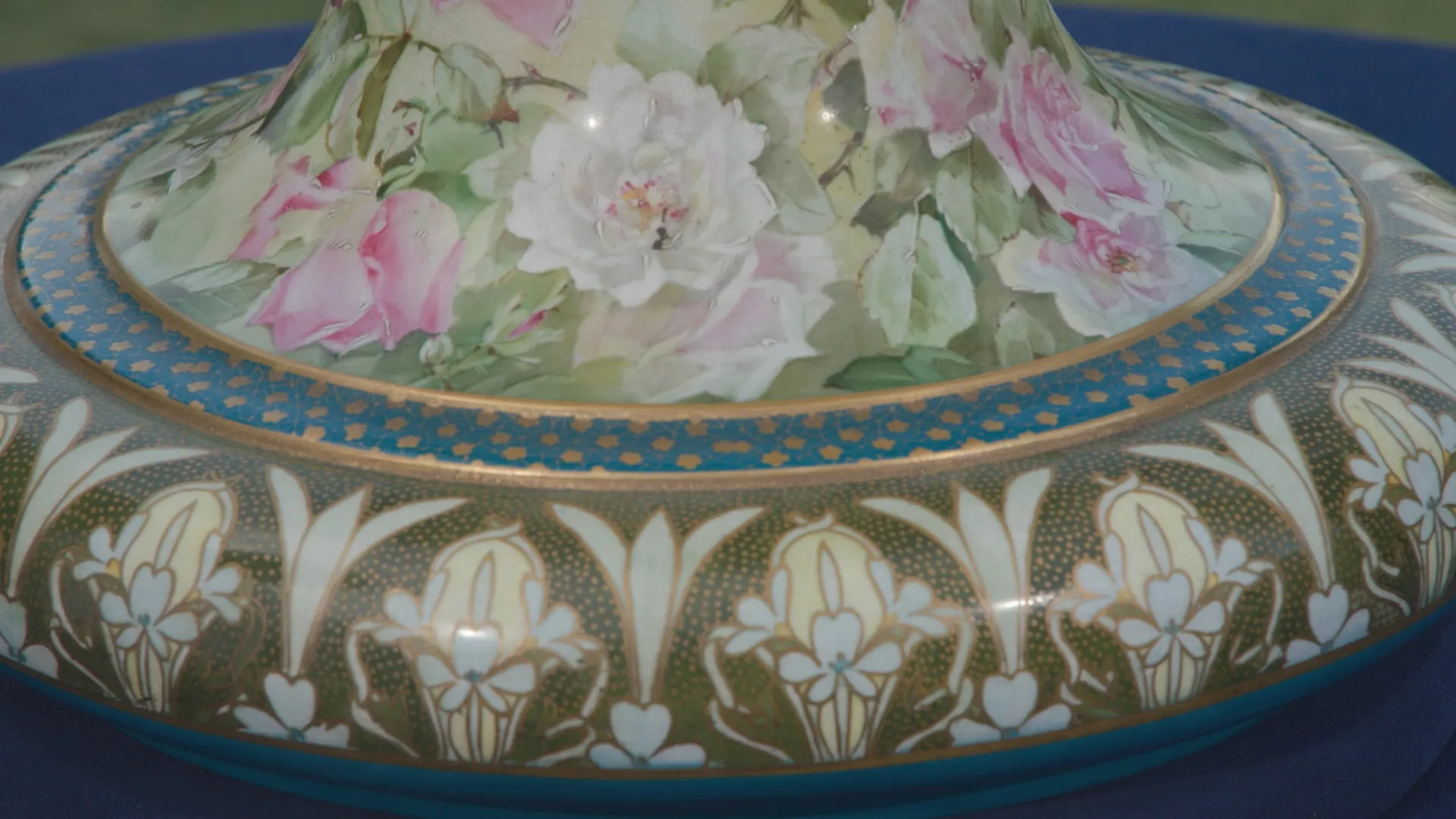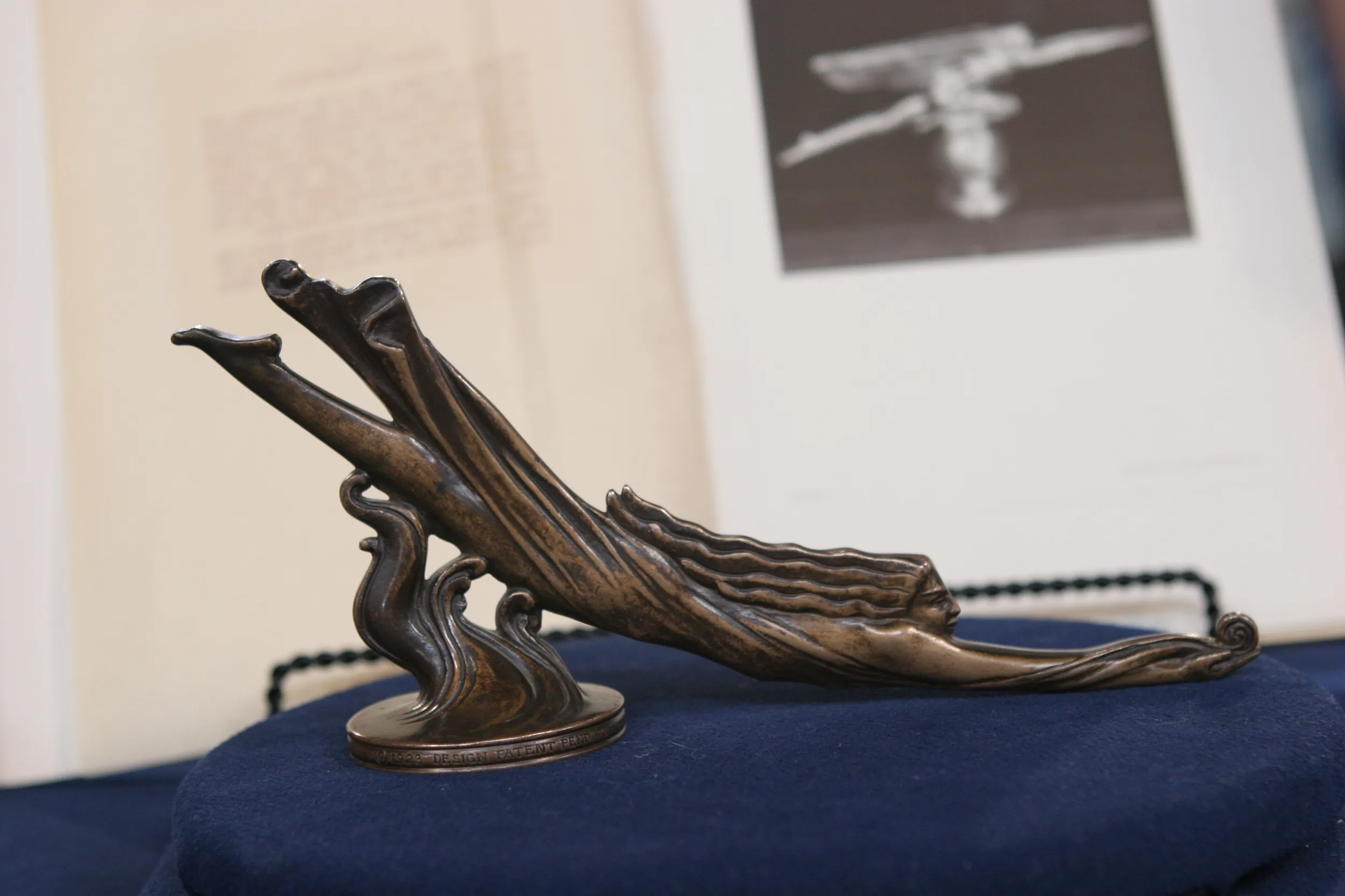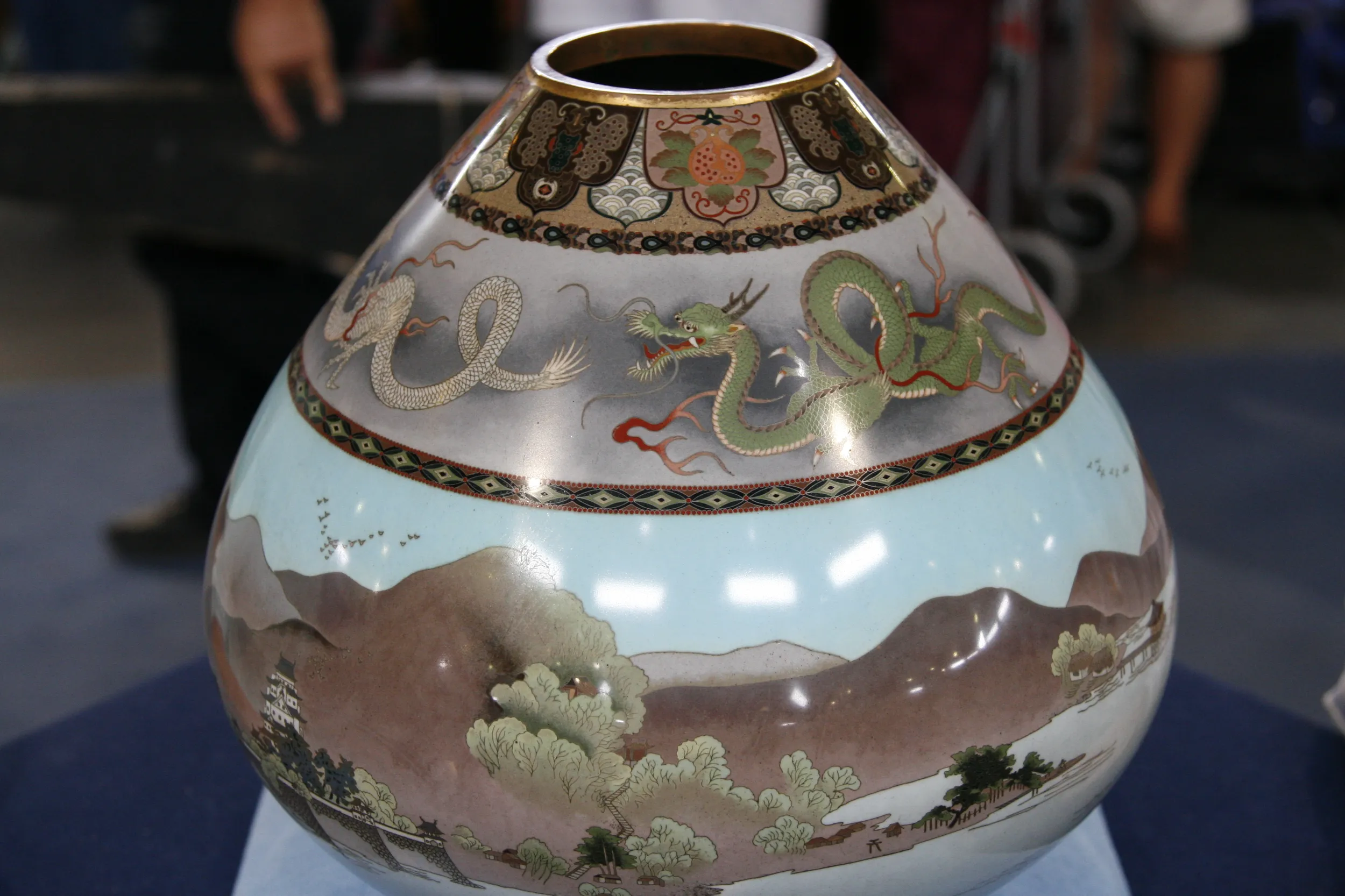GUEST: So this was a doll that my mother had, and she got it from her grandfather, who was, uh, Mr. Jones, and Mr. Jones of New York. It's a doll that, I believe, was used– that they would take to the stores, and then you could switch out the heads...
APPRAISER: Mm-hmm.
GUEST: ...for the dolls, to see which type of, uh, head that they wanted for purchase of the dolls. My grandfather was a salesman for Jones of New York, and I believe he gave it to her from his father's company.
APPRAISER: Your doll was made by Kestner, in Germany...
GUEST: Okay.
APPRAISER: ...and he was a, a self-proclaimed king of dolls. He started making dolls early on...
GUEST: Mm-hmm.
APPRAISER: ...when they were still making porcelain heads, which a lot of people call china heads.
GUEST: Okay.
APPRAISER: And then he progressed into what we call the bisque dolls, like this one.
GUEST: Okay.
APPRAISER: What's wonderful about your doll is it's in its original German-labeled box.
GUEST: Okay.
APPRAISER: These dolls were directed mostly to the American market. The Germans loved to sell things to the U.S. department stores.
GUEST: Okay.
APPRAISER: That was their bread and butter. So most of the boxes came over with English-printed labels.
GUEST: Oh, okay.
APPRAISER: It would say Kestner and so forth. But, as you can see, yours is not. It's a German label. You think it's a salesman sample?
GUEST: I, I think so, because my grandfather and his stepfather would travel for many months of the year; the United States and also the world. And so they would pick up different items, uh, from all over.
APPRAISER: It's very likely that he purchased it over in Europe.
GUEST: Okay.
APPRAISER: But it is not a salesman sample.
GUEST: Oh.
APPRAISER: This is a deluxe toy for a young child and "wonder kind," which I'm not even going to try to pronounce with a German pronunciation (laughs) because I'm already adding the Southern dialect to it.
GUEST: Uh-huh.
APPRAISER: But it's the "wonder child." It was sold as a set.
GUEST: Okay.
APPRAISER: Kestner also made all of these doll heads as individual dolls, too. What was really fun about this doll– it was made in 1910.
GUEST: Wow.
APPRAISER: And it was made just like this for the child. So they could have four dolls in one. And so you would unhook this one and then hook that one on. We don't find a lot of these on the market, first of all. But a lot of times they come together, because the child did find it too difficult to change the heads out.
GUEST: Okay.
APPRAISER: So a lot of times they did stay this way. A lot of other times, they found other doll bodies, because at that time, you could buy doll bodies and even doll heads at the department store.
GUEST: Oh, wow.
APPRAISER: So to find it all together is really fun.
GUEST: That's awesome.
APPRAISER: So what you have is a little Kestner 171, the one that's standing up and all dressed up.
GUEST: Okay.
APPRAISER: She's got a mohair wig. And what's different about her than the other doll heads is her eyes actually sleep.
GUEST: Yes.
APPRAISER: And she has a little open mouth with little teeth. Dolls with open mouths are very commonly found...
GUEST: Okay.
APPRAISER: And the ones that collectors really love right now...
GUEST: Uh-huh.
APPRAISER: ...are the ones that are in the box.
GUEST: Oh, wow.
APPRAISER: That have painted eyes and closed mouth.
GUEST: Okay.
APPRAISER: And the value in an auction...
GUEST: Uh-huh.
APPRAISER: would be between $6,000 and $8,000.
GUEST: Great. Okay, great. That's wonderful.
APPRAISER: Yeah, so, you've got a very valuable little doll.
GUEST: Okay, wonderful.

